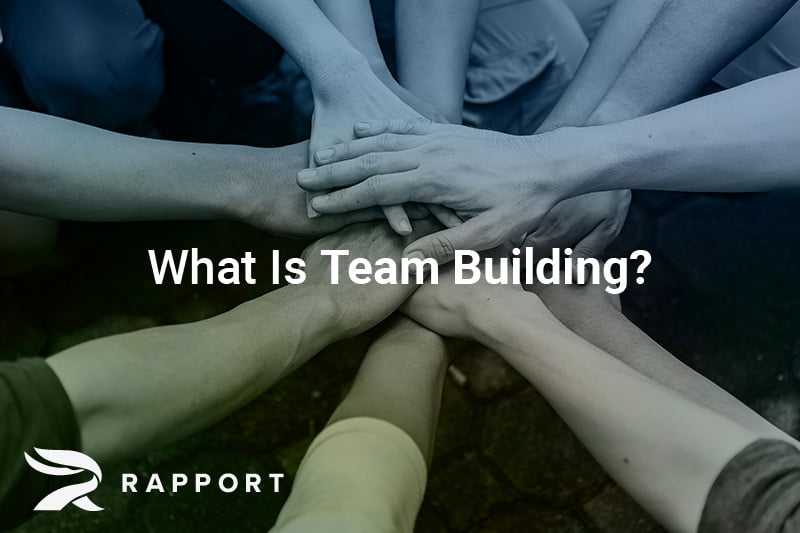What Does It Mean to Be the Best You Can Be?

You're doing pretty well. You've got a roof over your head, food in your refrigerator, and family and friends that care about you. Lately, though, you've had this nagging feeling that there's more to life than the daily grind. Every day seems to be the same: get up, take care of hygiene, care for the family, head off to work, work 8-12 hours and then come home, take care of the family, and then salvage what you can for "free time" before collapsing into bed only to do it all over again the next day.
Life is good. You just can't help wondering if it could be great.
Check out our personal development training →
What Does It Mean to Be the Best You Can Be?
Don’t worry. This article is not about to suggest you drop everything to join the Army this second (unless you feel called to do so). And that parenthetical is key. While you may think of yourself as a pretty good person right now, you may feel called to become a better version of yourself. Think of what it would be like to improve the quality of your life, your health, the quality of your relationships, and your level of happiness… all by striving to be the best you possible.
You might be stuck in a comparison-itis rut right now. You think other people are better at their jobs or make better parents or partners, and if only you could be like them, everything would be better.
That couldn't be further from the truth. Comparing yourself to others is a slippery slope. You see, the only person you need to compare yourself to is the person you were yesterday. As long as you are constantly improving, it doesn't matter where the rest of the world is.
Self-Actualization: The Best Version of You
If you've ever taken a Psych 101 class, you probably remember a theory from Abraham Maslow called Maslow's Hierarchy. In it, he created a pyramid with 5 levels of "needs" that all humans have.
Physiological Needs
The base of the pyramid, physiological needs include food, water, sleep, and shelter. Until these are taken care of, nothing else matters.
Safety Needs
This second tier includes personal security, financial security, health, and well-being.
Love/Belonging Needs
The third tier involves the desire to feel loved and accepted. This includes friendships, intimate relationships, and family.
Esteem Needs
Esteem needs include people's desire for recognition, importance, and respect. People want to be valued by others.
Self-Actualization Needs
Self-actualization is found at the very top of the pyramid. Once all of the other needs are met, individuals then strive for meaning in life. Highly creative, "psychologically robust" individuals reach this tier when they are taking full advantage of their talents and, ultimately, living their best life.
Is Self-Actualization Possible?
Self-actualization isn't a finish line that you're shooting for but rather a way of life. It's also not a blanket "state" for everyone. Who you are and how you live your life will determine your version of self-actualization. In addition, you may have some of the qualities of a self-actualized person yet never be fully there.
Maslow believed that while completely possible, self-actualization was very rare and only 1% of the adult population ever fully achieved it. Nonetheless, it's something worth working towards.
How Do You Determine What Self-Actualization Looks Like for You?
Discovering what your own personal self-actualization looks like can be a daunting task. After all, wouldn't it be much easier if everyone's "best self" looked the same? Easier, probably. Boring, absolutely!
Therapy, personal development books, seminars, and leadership retreats will prove useful to assist you in this process. However, no matter which route you choose, you'll need to become introspective. No one can tell you what the "best you" looks like... except for you. They can, however, provide a safe space for you to go inside yourself and meet "you"... possibly for the first time ever.
In order to determine what your version of self-actualization looks like, you'll need to do the following:
Be present.
You can't focus on personal development in the moment if your brain is going over your to-do list, making sure you have enough cookies for your kid's bake sale, or worrying about what upper management will think of the new ideas you've implemented. The only way to create the space for personal development is to be present. Those other tasks will be there when you're ready for them.
Be an observer.
Often, when we are dealing with a challenging experience, our ego runs wild in an attempt to protect itself. Instead of reacting as yourself, step outside to an observer role. This takes the emotion out of the situation and allows you to act from a place of intuition.
Be yourself.
From the moment you were born, you've had people telling you how to live your life. They may have simply guided, or they may have dictated your every move. In order to determine what self-actualization looks like for you, you'll have to actually be you rather than anyone else's version of you. This can take some getting used to, and it's worth the work.
Achieving Self-Actualization: How to Be the Best You Can Be in Life
No matter what self-actualization looks like to you, it's important that you know the steps necessary to achieve it.
1. Understand your core strengths.
You have a combination of talents and skills that makes you unique. Learn what they are and embrace them.
2. Uncover your weaknesses.
No one is perfect at everything. It's important to figure out what aspects of your life or personality could use some help. Once you've figured out where you're lacking, you can make the decision as to whether it's important for you to change in that area, and if so, how will you do it? Keep in mind, though, that perfectionism is a block to being your best self.
3. Create a personal and professional vision for yourself.
Where would you like to be in 5 years? How about in 10 years? Create a picture in your head of what your life looks like and then commit this idea to paper.
4. Craft a personal development plan to get you from where you are now to where you want to be.
Be realistic in the time frame and the work you'll do each day. The following quote is often attributed to Bill Gates:
"Most people overestimate what they can do in a day and underestimate what they can do in a lifetime."
5. Take one small step every day.
Remember that big change doesn't usually occur overnight (and when it does, it's often quite painful). You will have setbacks throughout your journey. However, as long as you are constantly moving forward, you'll be able to face and overcome every challenge that gets in your way.
Only you can determine exactly what self-actualization means and exactly who you want to be. Whether you ever reach the 1% of fully self-actualized people or just spend your life striving to become the best version of yourself, you'll benefit from embarking on this journey. Work at it every day and you'll discover how amazing your best life can be.


